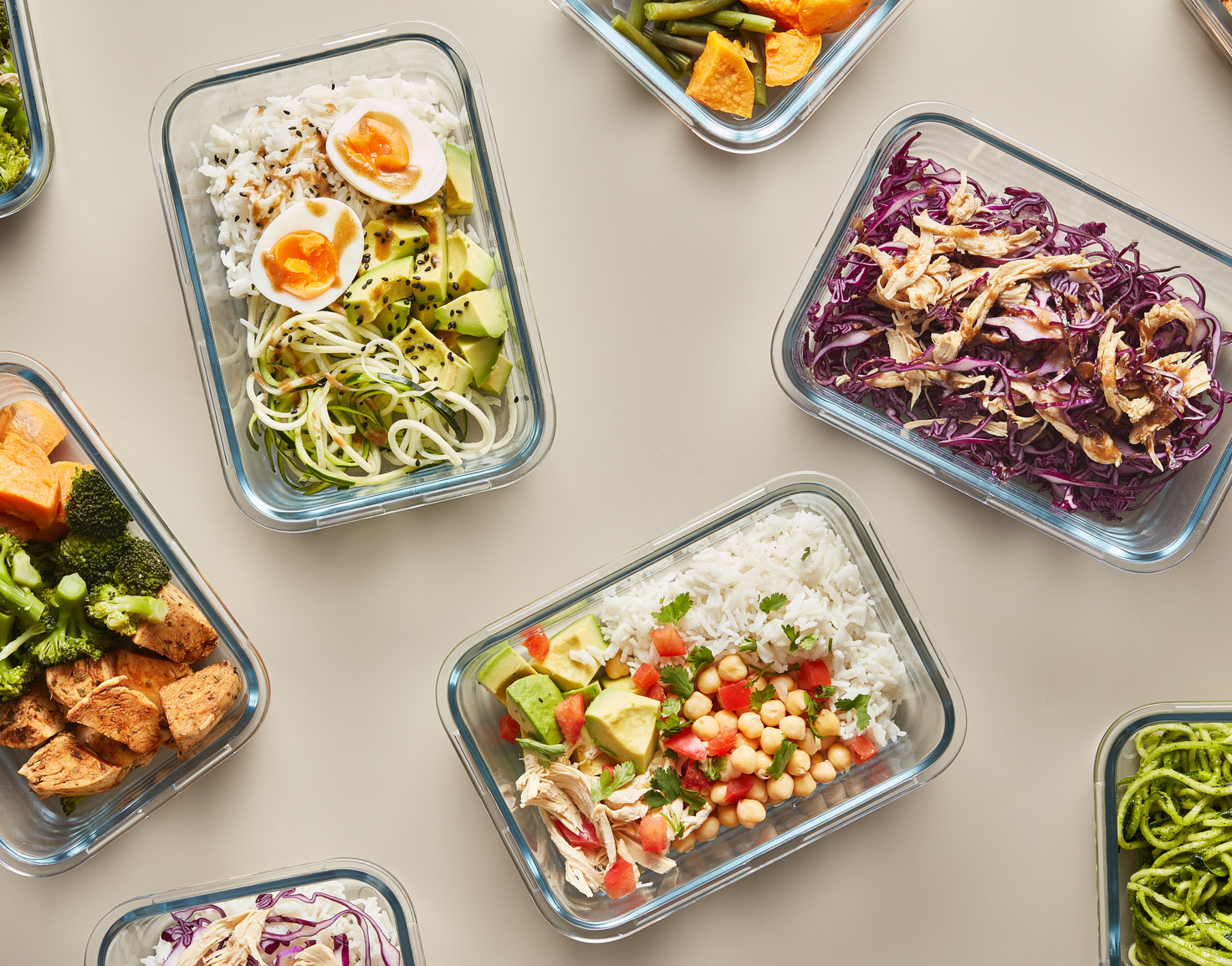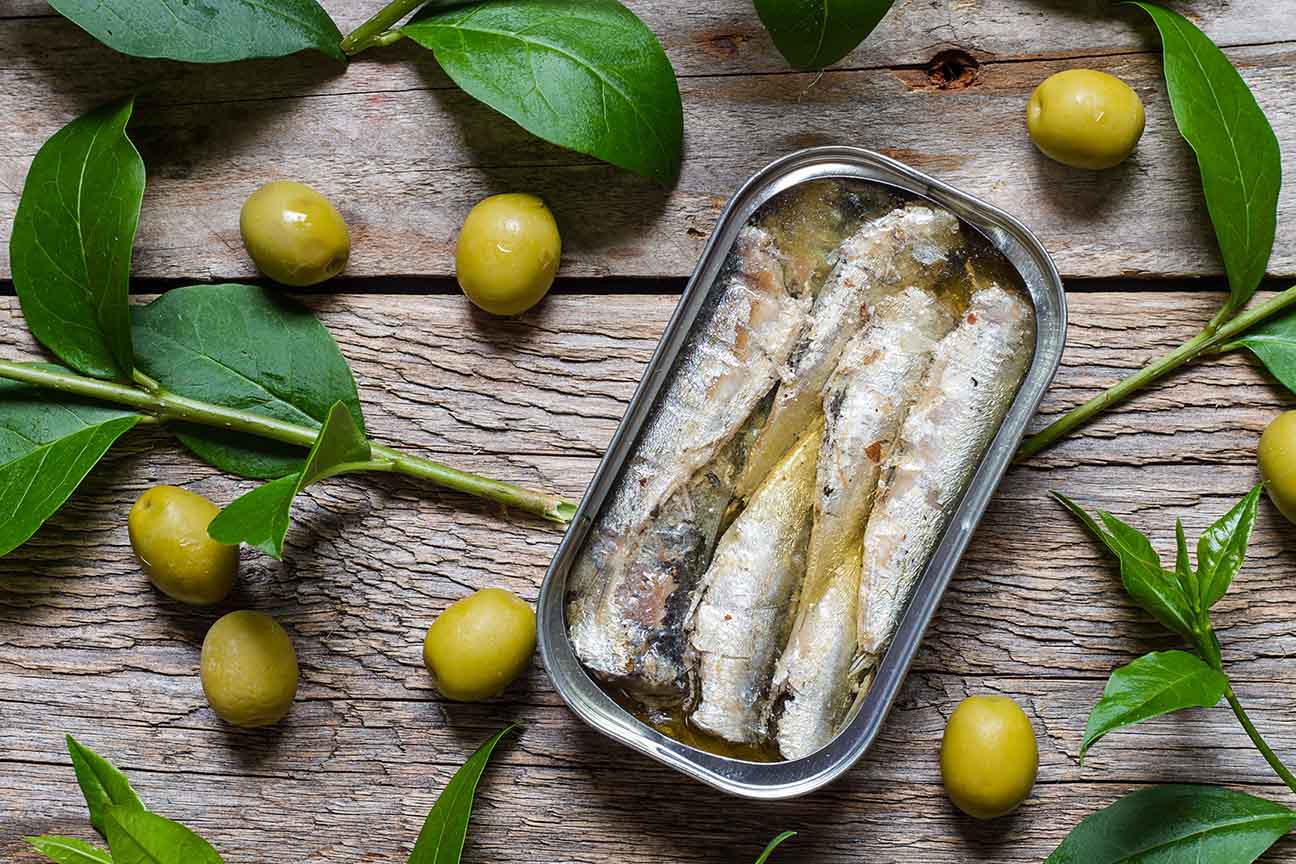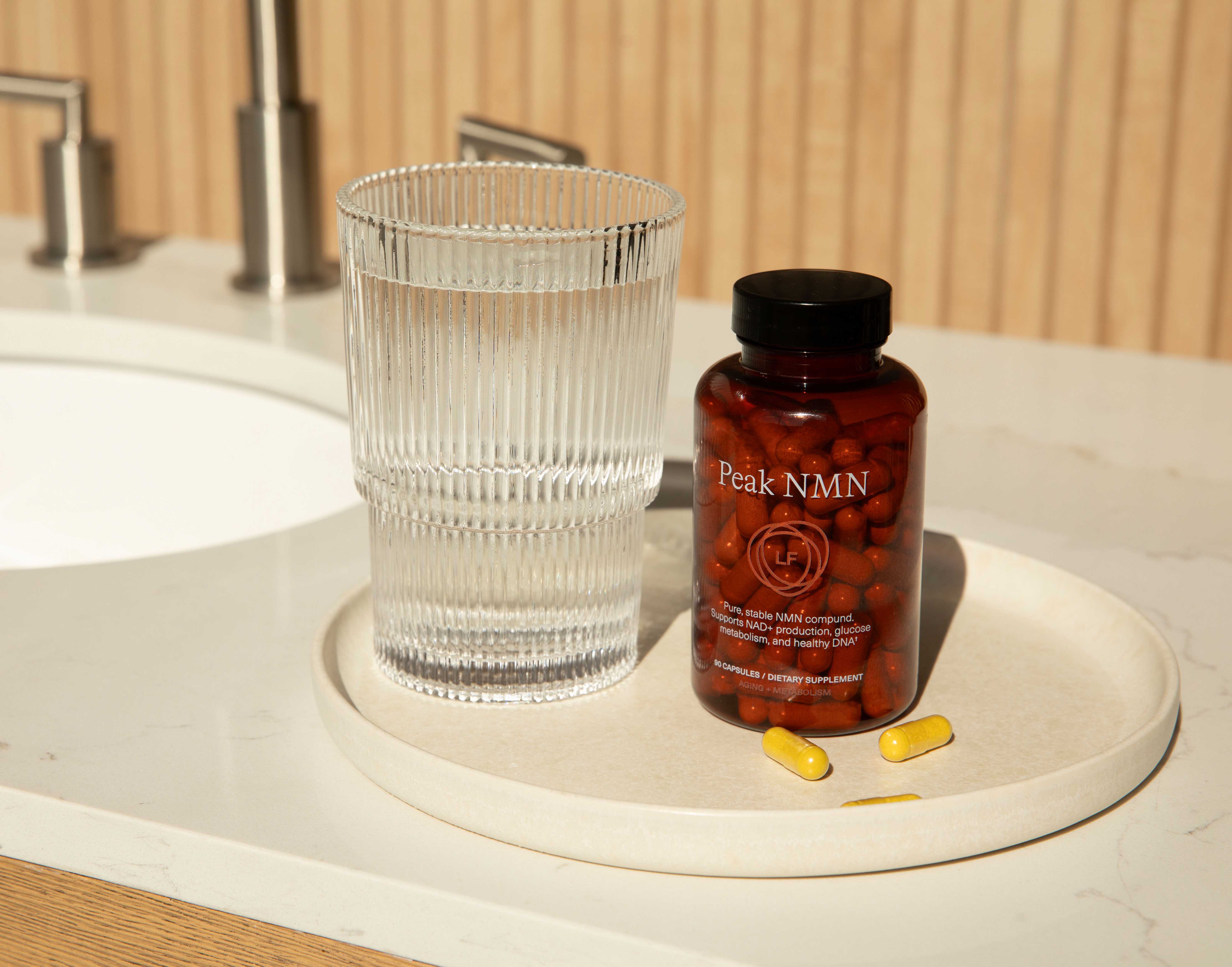If you’re short on time and long on priorities, planning your next meal might not be high on your list. In fact, researchers from Ohio State University and the University of Michigan-Dearborn found the number of hours someone works is a huge determining factor in whether they reach for fast food — even those who say they’re on a diet.
The good news is there are practical ways to bake healthy eating into your day-to-day to make the nutritious option even faster and easier than hitting the drive-thru.
We asked nutrition experts to outline nine key guidelines for sustaining healthy eating no matter how hectic your day gets. Incorporate these no-fail tips today and make small strides toward eating well. Not only will you look and feel better, but you’ll reap other benefits, including having more energy, recovering from workouts more efficiently, and sleeping more soundly.

1. Stash Single-Serving Snacks in a Cooler Bag
“If you’re leaving the house for more than two hours, pack healthy snacks in case of cravings,” says L.J. Amaral, MS, RD, CSO, a research dietitian at Cedars-Sinai. “Besides being delicious, healthy snacks provide the right amount of nutrients and energy to keep you going,” says Amaral. Keeping them single-serving makes sure you don’t accidentally overindulge.
How to do it: Amaral suggests grabbing single-serving snack packs from your local Trader Joe’s or health food store, such as olives, seaweed snacks, nuts, fruits, yogurt, and cottage cheese. You can keep the dry goods in a bag and the perishable stuff in a mini cooler bag.
Got a sliver of time in the morning to prep your own snack pack? Kristina Hallberg, RDN, a functional nutrition coach, recommends whole-food, nutrient-dense ingredients, like veggies and hummus or nuts and seeds. “Just be sure to limit overly processed sugary options,” she says.
“If you really have no time, at least grab a healthy meal bar,” says Mascha Davis, MPH, RDN, author of Eat Your Vitamins. “Bars by Sans or Zing are my top picks because of their awesome nutrition profile, flavor, and high-quality ingredients.”

2. Make 10-35% Percent of Your Calories Come From Protein
Include a source of lean protein in your meals and snacks. Not only does protein help keep you full and satiated, but it also provides essential amino acids your body needs to repair and thrive, says Hallberg. And remember, protein intake is even more critical as you age — more on that here.
How to do it: A general rule of thumb from the Dietary Guidelines for Americans is to consume between 10% and 35% of your total calories from protein. “Try to pair that protein with healthy fat and fiber if you can,” says Davis. If you’re following a Mediterranean diet, Hallberg says to focus on protein from fatty fish, like salmon, mackerel, or sardines, twice a week. Greek yogurt, chicken, tofu, or plant proteins such as beans or legumes are also great options.

3. Drink a Cup of Water for Every Hour You Work
Hallberg says hydration helps improve overall energy levels, so it’s even more imperative to stay hydrated when you’re busy and tired. Sometimes feelings of thirst can be mistaken for hunger, too, tricking you into eating when you really need a good glug of water.
How to do it: Carry a reusable water bottle and drink one cup of water every hour you’re working — whether that’s chasing after clients or your children. “Keep the water bottle with you everywhere you go,” says Amaral. “If it’s not with you, you won’t drink it, and when you have it, you have no excuses.” Set hourly reminders on your phone to drink up. If you work an eight-hour day, this makes sure you get at least 64 ounces into your system throughout the day.
Once you've mastered that, Dr. Leah Johansen, MD, a Board Certified Family Practice Physician, recommends individualizing your water intake to your body weight, climate, and lifestyle. “Get at least your body weight divided by two in liquids for the day. Add more if you drink coffee or tea as they are diuretics. And add 20% if you’re in arid climates or high altitude,” says Dr. Johansen.

4. Filter for Veggie-Centric Takeout Options
“If you aren’t prepared with your own meals and snacks, look for local restaurants that serve healthy options with lots of veggies,” says Amaral. Prioritizing vegetables helps reduce your intake of excess calories, fat, carbs, sodium, and potentially sugar, as well as cancer-potentiating compounds from processed foods, packaging, and certain cooking methods, she says. (We’re looking at you, deep fryer!)
How to do it: Look for healthy fast-casual chains, like Sweetgreen and Mendocino Farms, which have locations in various states. Davis loves their fresh to-go salads and sandwiches because they have the right balance of macros.
Stuck at home or at the office? Postmates, Doordash, and other delivery services allow you to filter for “healthy” categories.
If you’re on the road, do a Google Maps search and check out the photos and menus for nearby restaurants or salad bar options at grocers like Whole Foods. On Yelp, you can filter for “salads” — yep, it’s that simple sometimes.

5. Dedicate 1 Hour to Meal Prep Each Week
“The more you plan, the more healthy choices you will have to choose from,” says Hallberg, who suggests prepping full meals or even just the ingredients in advance. You can prep fiber-rich breakfasts, colorful lunch salads, and protein-tastic snacks for the entire week in one hour (if you adequately plan ahead) — trust us we timed it!
How to do it: Wash broccoli, cauliflower, bell peppers, red onion wedges, carrots, and squash (or your veggies of choice), cut them into similar size pieces, drizzle with olive oil, season with salt and pepper, and roast at 400-degrees for about 20 minutes.
Meanwhile, cook up grains — quinoa, farro, brown rice, etc. — on the stovetop, rice cooker, or Instant Pot. Bonus points if you can also cook up a pot of red lentils. Combine one cup of red lentils with two cups of stock in a pot and let it simmer for about fifteen minutes.
As everything’s cooking, chop up various veggies to top off salads or eat with hummus: sweet peppers, carrots, celery, radishes, and cucumbers. Portion them out into jars for quick grab-and-go ability. While you’re at it, whip up a salad dressing, using a ratio of one part vinegar to three parts olive oil. Add some herbs, crushed garlic, and Dijon mustard; shake it all up in a tight-sealing container.
Then, portion out your snacks — nuts, hummus, olives, fruit — into single servings, and fill jars with overnight oats and chia seed pudding so there’s always a healthy breakfast waiting for you amid the morning rush. We love Purely Elizabeth Superfood Oatmeal. Just mix ⅓ cup of it with ⅓ cup of your milk or mylk of choice.

6. Fatten Up the Pantry with Tinned Fish
Omega-3 fatty acids — found in fish, olive oil, and nuts — are a type of healthy fat that helps reduce inflammation and keep your heart healthy. They’re especially imperative when you’re busy and stressed because of their anti-inflammatory qualities.
Seafood is one of the richest sources of omega-3s, but you don’t always need to consume fresh filets. When you don’t have time to cook, reach for the tinned variety.
How to do it: Load up your pantry with tinned salmon, cod, trout, sardines, mackerel, anchovies, and herring — fish that Dr. Douglas Lucas, DO, says are least likely to be contaminated with pollutants and toxins. For ready-to-eat options, Davis likes Scout brand, which come packed with spoons and dried herbs and spices to top off your fishies.

7. Stock Your Freezer with Produce
If you’re guilty of stocking up on fresh produce only to find it wilted after a back-to-back Zooms kind of week, consider prioritizing frozen produce instead. Frozen fruits and veggies can be just as nutritious as their fresh counterparts and are always at their peak when you’re tired and hangry. People who buy frozen fruits and veggies also tend to consume more produce than those who don't.
How to do it: Cruciferous vegetables and leafy greens offer the most bang for the buck when it comes to powerhouse vegetables. Fill your freezer with frozen broccoli, Brussels sprouts, spinach, cabbage, cauliflower, collard greens, and kale. There’s no need to wash and chop them up, making heating them in the microwave or pan fast and easy. For fruit, opt for berries, which are high in antioxidants and fiber, and make gorgeous smoothies.

8. Sleep 7 to 9 Hours to Stave Off Cravings
A Stanford study of sleep-deprived physicians found that inadequate sleep leads to junk food cravings, impaired willpower, and lower appetite-regulating hormones, meaning there might be no end to chowing down on snacks high in added sugars, sodium, and saturated fat. But healthy foods can help regulate hormones, neurotransmitters, and blood flow, as well as reduce oxidative stress and inflammation.
How to do it: Get the recommended seven to nine hours of deep sleep by practicing good sleep hygiene, including making the bedroom a soothing environment, powering down your devices at night, and watching your caffeine and alcohol intake.
On days when the damage is already done, and you’re running on four hours of shut-eye, double down on eating balanced, nutritious meals and snacks to fight the worst effects of sleep deprivation — brain fog, fatigue, and irritability — and improve tonight’s sleep quality.

9. Supplement When You Need a Boost
Eating a balanced diet is always the ideal, but more often than not, life gets in the way. That’s when a supplement can help give your body the extra assist it needs.
For energy: Peak NMN™ is a longevity-enhancing supplement formulated to support healthy DNA and maximize cellular energy.
For recovery: Peak Rest™️ supports stress regulation and can help you stay in deep sleep longer.
Looking for more support to live better when busy? In the Lifeforce Membership, you’ll have access to biomarker testing every three months, plus ongoing personalized advice from a Lifeforce clinician and health coach. Learn more here.
This article was medically reviewed by Leah Johansen, MD, Board Certified Family Practice Doctor, Institute for Functional Medicine Certified Practitioner.
This article was originally published on September 25, 2023. Updated on September 8, 2025.

